Cities in Africa
Visit Dar es Salaam
Dar es-Salaam is the largest city and former capital of Tanzania. It is the largest city in East Africa and the seventh-largest in Africa, with a population of 6,701,650. On the Swahili coast, Dar es-Salaam is an important economic centre and one of the fastest growing cities in the world. Dar es Salaam is certainly at the top of the list of places to see for most visitors to Tanzania and East-Africa.
About Dar es Salaam
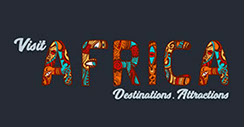
+256 760 038002 | +256 753 456707
info@visitafrica.site
Dar es Salaam (Haven of Peace in Arabic) was founded in 1862 by Sultan Seyyid Majid of Zanzibar on the site of the village of Mzizima. Mzizima's history dates back to when the Barawa people started to settle and cultivate the area around Mbwa Maji, Magogoni, Mjimwema, Gezaulole, and Kibonde Maji Mbagara. Dar es Salaam's origins have been influenced by a myriad of Sultans, the Germans, and the British. The city started as a fishing village in the mid-19th century, is now Tanzania's largest city, and has become one of East Africa’s most important ports and trading centres.
With its great atmosphere, mix of African, Muslim, and South Asian influences, picturesque harbour, beaches, chaotic markets, and historical buildings, it is well worth extending your stay beyond the time between flights. Dar es Salaam is Tanzania's financial and political hub despite having lost its status as the capital to Dodoma in 1973.
Geography
Dar es Salaam is located at 6°48' South, 39°17' East (−6.8000, 39.2833), on a natural harbour on the coast of East Africa, with sandy beaches in some areas. Most visitors to Dar arrive via Julius K. Nyerere International Airport, about 10 km west of the city centre. Dar is flat and is bordered on the east by the Indian Ocean.
Climate
Dar es Salaam has a very humid climate and relatively stable temperatures, both in terms of night-to-day, and summer-to-winter. The driest and coolest season is June through early October. Short rains occur November through February (especially December), and long rains occur March through May, with monsoon season peaking in April. Temperatures are high November through May, highest in January. Between December and February, in the dry season, temperatures can rise to the mid-30s (°C); due to the high humidity, discomfort can be very high. You should seek shelter from the sun during the midday heat and use copious amounts of sunblock. Best times to visit are: June-Sept, after the rainy season, with milder temperatures and lower relative humidity.
History
In the 19th century, Mzizima (Swahili for "healthy town") was a coastal fishing village on the periphery of Indian Ocean trade routes. In 1865 or 1866, Sultan Majid bin Said of Zanzibar began building a new city very close to Mzizima and named it Dar es Salaam. The name is commonly translated as "abode/home of peace", based on the Arabic dar ("house"), and the Arabic es salaam ("of peace").[8] Dar es Salaam fell into decline after Majid's death in 1870, but was revived in 1887 when the German East Africa Company established a station there. The town's growth was facilitated by its role as the administrative and commercial centre of German East Africa and industrial expansion resulting from the construction of the Central Railway Line in the early 1900s.
German East Africa was captured by the British during World War I and became Tanganyika with Dar es Salaam remaining the administrative and commercial centre. Under British indirect rule, separate European (e.g., Oyster Bay) and African (e.g., Kariakoo and Ilala) areas developed at a distance from the city centre. The city's population also included a large number of workers from British India, many of whom came to take advantage of the trade and commercial opportunities presented to them. After World War II, Dar es Salaam experienced a period of rapid growth.
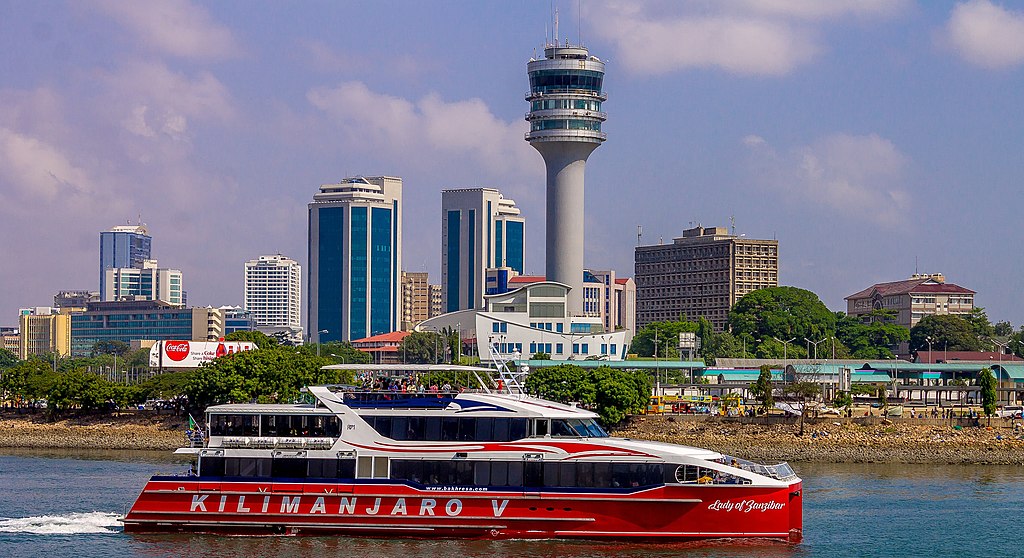
Getting In
- Visa Information; Citizens of Commonwealth countries, unless they are citizens of United Kingdom, Canada, Nigeria, Australia, Pakistan, or India, do not need a visa for entry into Tanzania. Travellers from the countries listed here must obtain a visa before arriving in Tanzania. However, travellers from most countries, including United Kingdom, Canada, Nigeria, or India, can obtain a visa on arrival for a fee of US$50 (US$100 for citizens of the United States).
- By Plane; Julius Nyerere International Airport > Most large hotels offer a pick-up and drop-off service upon request. A taxi from the airport to the city centre will cost you from TSh 30,000 with higher prices at night. Bajaji vehicles charge about half the price of a normal cab. Walking out of the airport to the main road there’s a daladala stop, which can get you to town cheaply.
- By Train; Dar es Salaam is the hub for all rail travel in Tanzania. In principle, there are two lines running into Dar. Tanzania Railways Corporation has services from Kigoma, Mpanda and Mwanza in the west, via the center of Tanzania, including the capital Dodoma. However, there have been safety issues on these trains. Tourists should try to travel in groups, and/or buy out a first class cabin. It is recommnded to keep doors and windows locked, especially when sleeping. It is possible to buy fresh fruit, eggs, and other items out of the windows all along the way.
- By Bus
- By Car
- By Boat
Getting Around
- By Foot; Walking around central Dar is a nice way to see the city and probably the best way to get around. In general people will leave you alone except for the occasional greeting. There aren't many sidewalks in Dar so exercise caution when walking along busy roads.
- By Bike; Cycling around Dar is possible but can be difficult and scary. You should be comfortable with cycling in high-congestion areas where a cyclist is often low in the food chain. Tanzanians have little patience when driving and in their mind any vehicle smaller than theirs is responsible for getting out of the way. Cycling on the Msasani Peninsula is less bad than in more urban areas. Wear a helmet and hone your defensive cycling skills.
- By Car; Car hires can be organized through most hotels. Tanzanians drive on the left. Like many developing countries, driving in Dar can be stressful, difficult and dangerous.
- By Taxi; There are no formal taxi companies in Dar es Salaam nor are there any contact centres reachable the 24 hours of the day (or at any time). Taxi drivers are not associated to any public transport company (they run their own business) but they are regulated by the government. Look for white license plates and a taxi number painted on the side. Taxis also have official receipts.
- By Minibus (Daladala); The most common form of public transportation in Dar are minibuses called "daladalas". These minibuses follow specific routes with the start and ending point clearly marked on the front of the vehicle. At the main stations (Ubungo, Posta, Mwenge) daladalas from each route do stop to collect passengers at the same stop at the station. It's fine to ask someone were to find the daladala you're looking for, the newspaper and phonecard sellers are often quite helpful.
- By Motorcycle (Boda-boda); Though not as common as Bajajs, there are many motorcycle taxis, called "bodaboda" ("pikipiki" can also be heard, this just means motorcycle). They are even cheaper than Bajajs, and because of their size they can get you to your destination much quicker during rush hour (which is pretty much all day long in Dar) by zigzagging between cars.
- By Commuter Rail; Two commuter rail lines run through the city. One line runs 25 km between the Mwakanga and Tazara railway stations. The second runs 20 km between Ubungo-Maziwa and City railway stations.
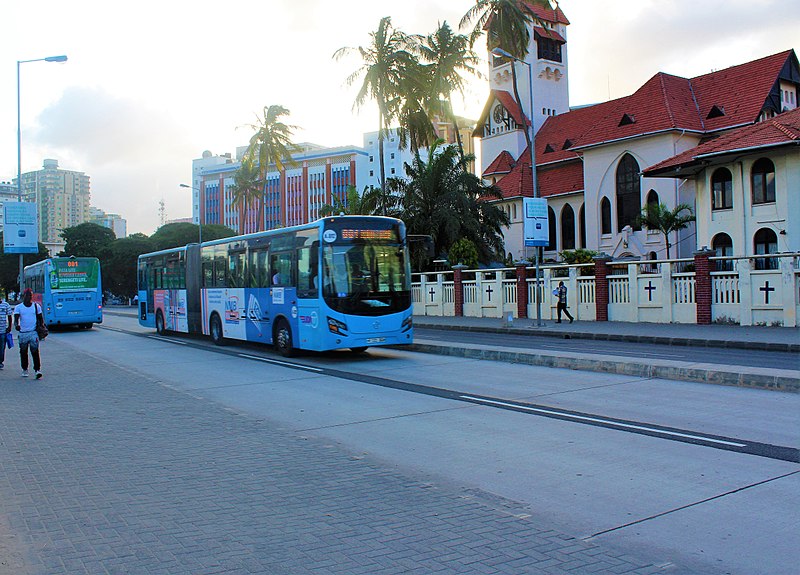
Attractions (What to See)
- National Museum, 5 Shaaban Robert St; The national museum mainly shows photos and exhibitions on the development of human nature. A must go to see the skull of the Nutcracker Man (1.75 million years old) and the cast of the even older (3.6 million years) laetoli footprints. Also find a botanical garden on the other side of Samora Ave.
- Makumbusho Village Museum; All of the houses within the village were constructed in accordance with the types of houses built by various ethnic groups throughout Tanzania.
- Askari Monument; A monument dedicated to the Askari soldiers who fought in World War I.
- Zoological Gardens.
- Karimjee Hall; Former parliamentary building. Still in use for seminars.
- Azania Front Lutheran Church. In the center of the city and built by German missionaries is a well known landmark.
- Ocean Road Public Park just east of the National Museum and House of Culture is not too enthralling with the way the main sewer line for the city empties into the ocean right there with the smells to go with it.
- Bahari Beach hotel, is about 20 km to the north of Dar es Salaam along New Bagamoyo Road.
- Kigamboni also known as "South Beach", is situated across the channel from the Zanzibar ferry. You can get to the other side by ferry, not the same as for Zanzibar. Avoid taking pictures on the ferry or at the terminals, even of the skyline.
Things to Do
- For a great day trip, head out to Bongoyo Island. Bongoyo is a small, uninhabited island just off the coast. The boat to Bongoyo leaves from Mashua Waterfront Bar & Grill at Slipway, the upscale set of shops and markets on the Msasani Peninsula, just north of Dar es Salaam.
- Mbudya Island is a smaller island just north of Bongoyo
- For a great excursion in the city to see the "real Dar," you should do an "Investour." Investours runs microfinance poverty tours, and you get to meet and talk to local entrepreneurs, see the Mwenge woodcarvers market in a behind-the-scenes experience, and even have a local Tanzanian lunch with some of the craftsmen.
- Hiking is possible in the Pugu Hills, some 12 km west of the airport. Villagers can assist as guide for a hike around the Pugu Hills or to the major cattle market of Dar es Salaam. Arrangements are through the Pugu Hills Nature Centre
- Sports The Yacht Club on the Peninsula is a gorgeous place but requires membership fees. You can enter as someone's guest and swim (in safety) or boat. It, and other places around town, offer scuba-diving lessons.
- Culture Read weekly 'What's Happening in Dar' and 'Advertising Dar' to get all the news of what's going on, including weekend get-away specials. There are always events like dance and music performances, artist openings at painting and photography galleries, movie festivals etc. Alliance Francaise,Goethe Institute, Iranian and Russian cultural centres offer special events along with some occasionally sponsored by embassies.
- Movies There are modern cinema halls like New World Cinema on Bagomoyo Rd.
.jpg?crc=472361525)
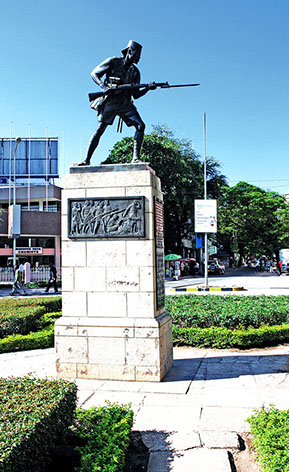
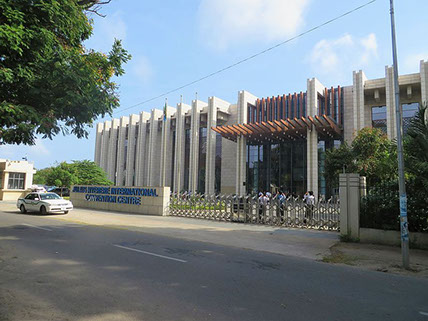
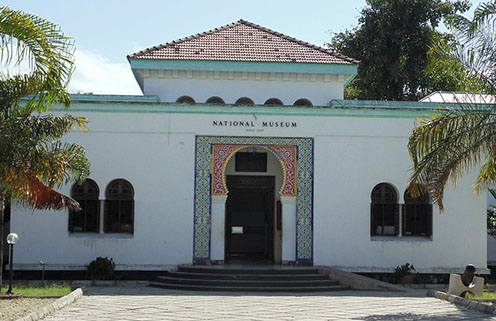
Where to Stay (Accommodation)
Budget:
- Econo Lodge, Libya Street, Close to the Safari Inn, has very simple but clean single rooms with private bathroom.
- Holiday Hotel, Jamhuri Street. An old colonial-era building that has been managed by the same Indian family for three generations. Lot of character but a bit run down and the mattresses are sweaty.
- Tamarine Guest House, Sofia Kawawa Street, Often fully booked.
- Safari Inn, Around Libya Street, has singles with private bathroom with simple breakfast. The hotel has an Internet café, and there are restaurants nearby.
- YMCA, Kivukoni, Single and double simple rooms. Rooms are cheaper if you are a resident of Tanzania, with a passport stamp to prove it.
- YWCA, Maktaba St., Simple and clean hostel style hotel that is in a very noisy neighbourhood. YWCA offers single rooms with fans and shared bathrooms. All bookings get free breakfast, but the it's not that tasty! A good place for backpackers to stay in the city center.
Mid-Range;
- Peacock Hotel, Bibi Titi Mohammed St, An air conditioned hotel with a small reception but some luxurious rooms. Overlooking Mnazi Mmoja Park. The hotel has a restaurant/bar with along with swimming pool, gym, and wireless internet access.
- Bellrose Hotel, Kaluta St Bridge Street (just off Samora Avenue and near the Zanzibar ferry station), Multi-story hotel with a restaurant downtown.
- Rainbow Hotel On Morogoro Road just down the street from Bellrose Hotel. but a little cheaper and less upscale. Clean rooms. Rooms; high floor doubles have excellent harbor views. Second floor restaurant has good Indian meals. Roof deck with panoramic city views. Free Wi-Fi. Very friendly staff.
- Harbour View Suites, Samora Ave (close to J.M. Mall), Harbour View Suites on Samora Avenue occupies the top floors of a modern office building. Rooms are large and very comfortable and have a fully fitted kitchen. On the ground floor a well stocked supermarket, an Italian pizza and coffee house for take-outs and a subway sandwich shop. Internet access in all rooms and in the business centre. It has a fitness center, and a fine dining restaurant with a bar that is the only jazz club in the city.
- Swiss Garden Hotel, Hanna Nassif, Small hotel in quiet neighborhood. Rooms are very clean, and have air conditioning, free internet, mosquito screens, safes, and refrigerators.
- Seashells Millennium Hotel, Millennium Towers, Bagamoyo Road (next to Makumbusho Village Museum), (formerly Millennium Towers Hotel) 4-star hotel with a/c, breakfast, and internet access. Although this beautiful hotel has a swimming pool, a number of bars and restaurants, a small shopping mall right next door, and a cinema within walking distance, be warned that there is nothing else worth seeing or doing within 5 km, and traffic can get so bad at certain times of the day that going anywhere, especially by dalla dalla, requires Herculean patience, copious amounts of water, and a copy of War and Peace, which should be just about right for the ride to and from the hotel.
- Mediterraneo Hotel & Restaurant, is in Kawe about 15 km north of the city centre, overlooking the Indian Ocean. Rooms have: air conditions,television, safe locker in the room. The swimming pool is 10 m. from the beach, and there is a free Internet Point at the reception, and wireless access around the bar & the lounge area.
- Pugu Hills Forest Reserve (12 km from Dar es Salaam airport), A 6-hectare Nature Centre. There is a pool and hiking opportunities. The Centre also has a 1 km nature trail on the premises. For overnight stay there are 4 lovely elevated bandas in the forested area, including breakfast for 2 persons
Splurge;
- Hyatt Regency Dar es Salaam, The Kilimanjaro, 24,Kivukoni Rd, On the harbour, in city centre, this luxury hotel offers rooms. Great breakfast buffet, and a world class spa with Thai masseuses.
- Southern Sun, Garden Ave, Part of the Tsogo Sun hotel chain. Botanical gardens on site. En suite rooms that are large and have mini-bars, safes, coffee makers, and free wifi. There are also two restaurants onsite. A bit far from city centre but still fine to walk during the day.
- Serena Hotel, Ohio Road (at the edge of city centre, across from Barclays Bank), Has hosted visiting African dignitaries (e.g. Robert Mugabe). Used to billet KLM and British Airways flight crews. Now said to have been reopened after having been shut down by the Government for tax evasion.
- Johari Rotana Tower, Sokoine Drive, Dar Es Salaam's brand new hotel tower (as of 2019), across from the Zanzibar ferry and the Pspf Twin Towers downtown. Rooftop pool, haute-cuisine experience, and sleek glass exterior. This one is all about class.
- Holiday Inn Dar Es Salaam, Azikiwe St, Compared to some of the other hotels in this category this is fairly economical. Nice looking tower and downtown location
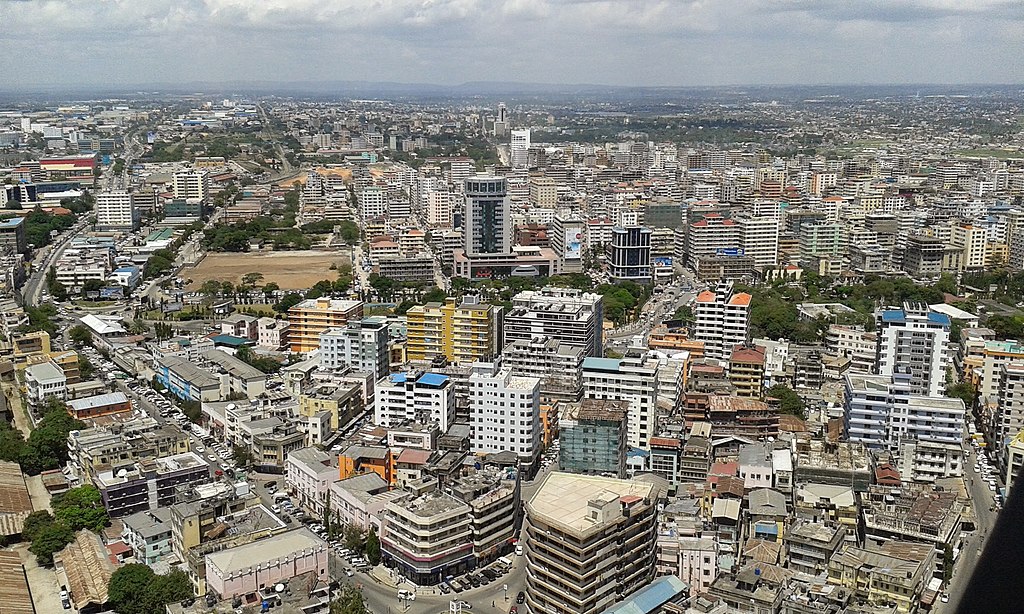
Architect Tourism SMC Ltd is an African tourism company, crafted to inspire and enable a breathtaking beautiful experience of Africa. Visit Africa is one of Architect Tourism SMC tourism brands. Visit Africa is inspired to craft innovative, fun and breathtaking tourism events, trips, excursions, getaways, safari, vacations, holiday, and tours experiences.
Vision: To inspire, craft, and enable a breathtaking beautiful experience of Africa.
Our Values: African, Oneness, Integrity, Client focused, Conservation focused, Innovative, Excellence, Simplicity.
Company Registration Number: 80020002986484 | Company Tax ID: 1018106912

Visit Africa is an African tourism brand, that profiles every tourist destination, in every country, in Africa; Destinations, How to get there, Attractions, Things to do, How to get around, itinerary pricing and Where to stay, for an adventurous breathtaking and thrilling experience of tourism of Africa.
Visit Africa
Destinations
Visit Namibia
We are Social!
Search this website!
Africa
Visit Africa
Visit Uganda
Visit Tanzania
Visit Zimbabwe
Visit South Africa
Visit Kenya
Visit Morocco
Tour Itineraries
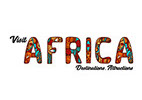
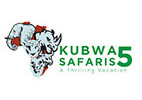









Visit Africa Copyright © 2019 - Visit Africa is a Tourism Brand of Architect Tourism SMC Limited.
Wildlife in Africa
Visit Egypt

Visit Rwanda